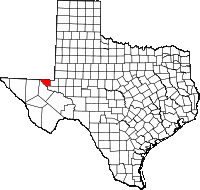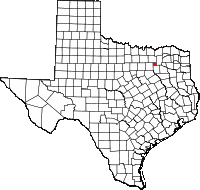I’ve been to Texas many times. I have family there, I have business there, and I’ve driven across its width. I don’t underestimate its gargantuan size. There’s a reason why “Everything is Bigger in Texas” has become such an iconic boast that borders on cliché. If Texas were still a country as it was when it gained independence from Mexico in 1836, it would be about the 40th largest in the world, on a par with France and Afghanistan.
Yes, It’s Really Big
The people of Texas take great pride in it’s wide open spaces and cowboy mystique. The state has created successful advertising slogans such as, “It’s like a whole other country” (tourism) and “don’t mess with Texas” (anti-littering campaign) to great effect.
Over the years I’ve driven frequently along Interstate 10 from Louisiana across the Texas border on the way to places like Houston, San Antonio and Austin. Texas wants you to know that it ain’t no puny eastern state. The Texas Department of Transportation purposely erected this road sign designed to break a traveler’s spirit.
Indeed, the state felt obligated to point out that El Paso on the western edge is 857 miles away from this stretch of highway all the way over in Orange County. Trust me, this is a horribly discouraging sign. Consider how long it takes to drive 857 miles (1,380 kilometres). It’s a lasting impression burned firmly into my psyche. They’ve made their point and it’s been taken.
As a testament to my fondness for Twelve Mile Circle, consider further how long it took me to find that one little road sign on Street View while clicking through miles of virtual highway images. More than I’m willing to admit. Oh, how I loathe that sign.
Texas is big. I get it. But is everything really bigger in Texas? Variability exists everywhere, even here, so naturally even in a super-sized state something has to be small, smaller or smallest. Let’s take a look at a couple of examples at the county level.
Loving County

Loving County doesn’t garner its fame and recognition from its name. The “loving” actually derives from Oliver Loving, the guy who got second billing on the historic Goodnight-Loving Trail where cowboys drove Texas Longhorns to market. What a pity that Loving doesn’t come from loving. It would have been a much better narrative.
Still, the residents get a few moments of glory and attention a couple of times a year when the national media decides to feature a quirky human-interest story here. Why? Because of the 3,000+ individual counties and county equivalents in the United States, only one of them has the fewest people. That happens right here in Loving County Texas, where the Census Bureau recorded just 64 residents in 2020.
Because of Oil and Gas
Settlement has always been sparse in this remote stretch of west Texas. There were only three residents recorded there in the 1890 Census. It peaked at 285 residents in 1940. The population ebbs and flows with the fortunes of the oil and gas industry, which is about the only thing out here except for ranching. More demand means more drilling, and the population increases. Maybe Loving County will experience a renaissance in a world of greater energy consumption.
I won’t spend much time discussing Loving County because of its regular media attention. Any search engine will fill pages of articles and narratives written by professionals. I will point out one of the better articles I saw, a 2006 New York Times feature called “1 Cafe, 1 Gas Station, 2 Roads: America’s Emptiest County.” I learned that a fringe group of outsiders tried to take over the county a few years ago to establish their version of a libertarian utopia. It doesn’t take much effort to out-vote 64 residents, or so they figured, but they sorely underestimated Texas Justice.
Rockwall County

Loving County may have the smallest population of any county in Texas and indeed the United States, but it is not the smallest in size. In Texas that honor goes to Rockwall County. See the little red dot up there towards the northeast on the map above? It’s hard to see, maybe only a single pixel, but it represents 149 square miles. It’s not even close to the smallest county in terms of population though. More than a hundred thousand people live in Rockwall.
Rockwall County falls within the highly-populated Dallas / Fort Worth metropolitan area, but it is dwarfed by its considerably larger neighbors. It’s natural to wonder why it even exists. How could such a tiny county have arisen in such a significantly populated area? The answer traces back to the later half of the Nineteenth Century.
How it Happened
Rockwall began as a little nonconsequential northwestern appendage tacked onto Kaufman County. It split-off in 1873 “because the county seat, Kaufman, was inconvenient for the residents of the northern panhandle.” It’s a little easier to see this on a map.
Thirty miles separate the two county seats. That doesn’t sound so bad. However let’s keep in mind that a modern road network did not exist in 1873 nor did the automobile. It would have been an all day affair and perhaps an overnight trip on horseback to transact even the most mundane county business. Many counties in the United States formed for similar reasons: residents felt isolated and under-served when their homes fell far from the county seat. Oftentimes this also resulted in second-class status, with fewer services for their taxpayer dollars.
Rockwall County isn’t the smallest county in the United States — not even close — but 149 square miles is a respectably diminutive footprint and not what one would expect to find in a behemoth like Texas.

Leave a Reply